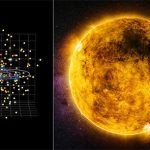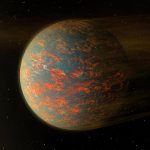Which stars are lethal to their planets
Many years ago, there was a viral YouTube video called “History of the entire world, i guess,” which has been an endless source of...
Scientists develop 3D printed vacuum system to trap dark matter
Scientists have developed an innovative 3D printed vacuum system to trap dark matter, a mysterious substance that makes up a large part of the...
Fish could turn regolith into fertile soil on Mars
What a wonderful arguably simple solution. Here’s the problem, we travel to Mars but how do we feed ourselves?
Sure we can take a load...
Baby stars buzz around our galaxy’s black hole like bees
High-speed baby stars have been found circling the supermassive black hole Sagittarius A* (Sgr A*) at the center of our galaxy, behaving like a...
Scientists discover water frost on Mars’ tallest volcanoes
Scientists have found patches of water frost on Mars' tallest volcanoes, known as the Tharsis volcanoes.
This discovery challenges previous ideas about the Martian climate...
How ancient interstellar clouds may have changed earth’s climate
Around two million years ago, Earth was a very different place. Our early human ancestors lived alongside animals like saber-toothed tigers and mastodons.
The planet...
Speeding star might escape the Milky Way: A cosmic mystery
While it may seem like the sun is stationary with the planets moving around it, the sun is actually orbiting the Milky Way galaxy...
Warp drives could generate gravitational waves
Will future humans use warp drives to explore the cosmos?
We’re in no position to eliminate the possibility. But if our distant descendants ever do,...
Scientists discover how magnesium oxide shapes super-earths
Scientists have made an exciting discovery about magnesium oxide, a key mineral found in the Earth's mantle, which could also play a crucial role...
Scientists discover ‘weird’ new exoplanet that defies expectations
A newly discovered exoplanet, nicknamed "Phoenix," has left scientists puzzled by retaining a puffy atmosphere despite being bombarded by intense radiation from its nearby...










